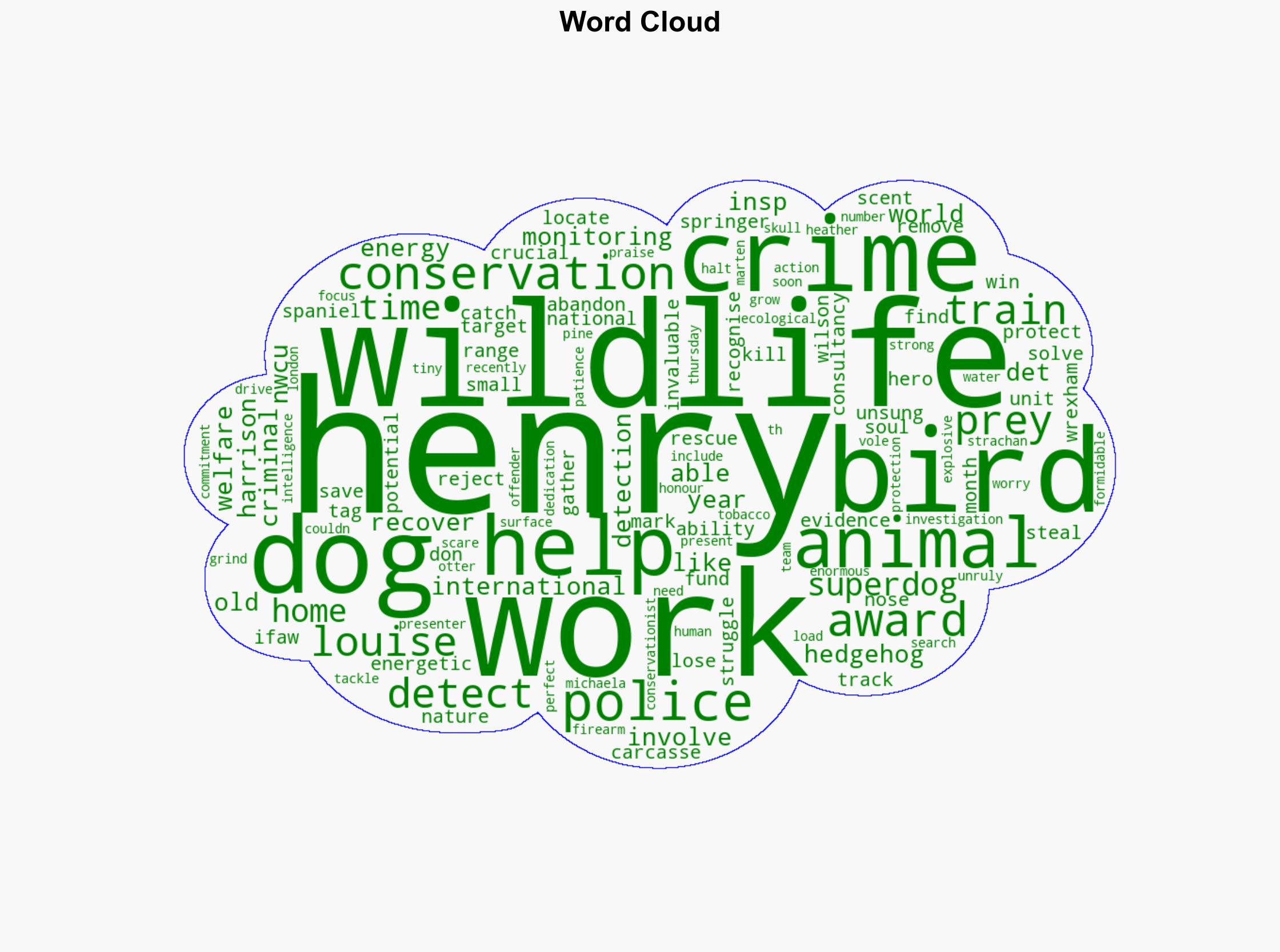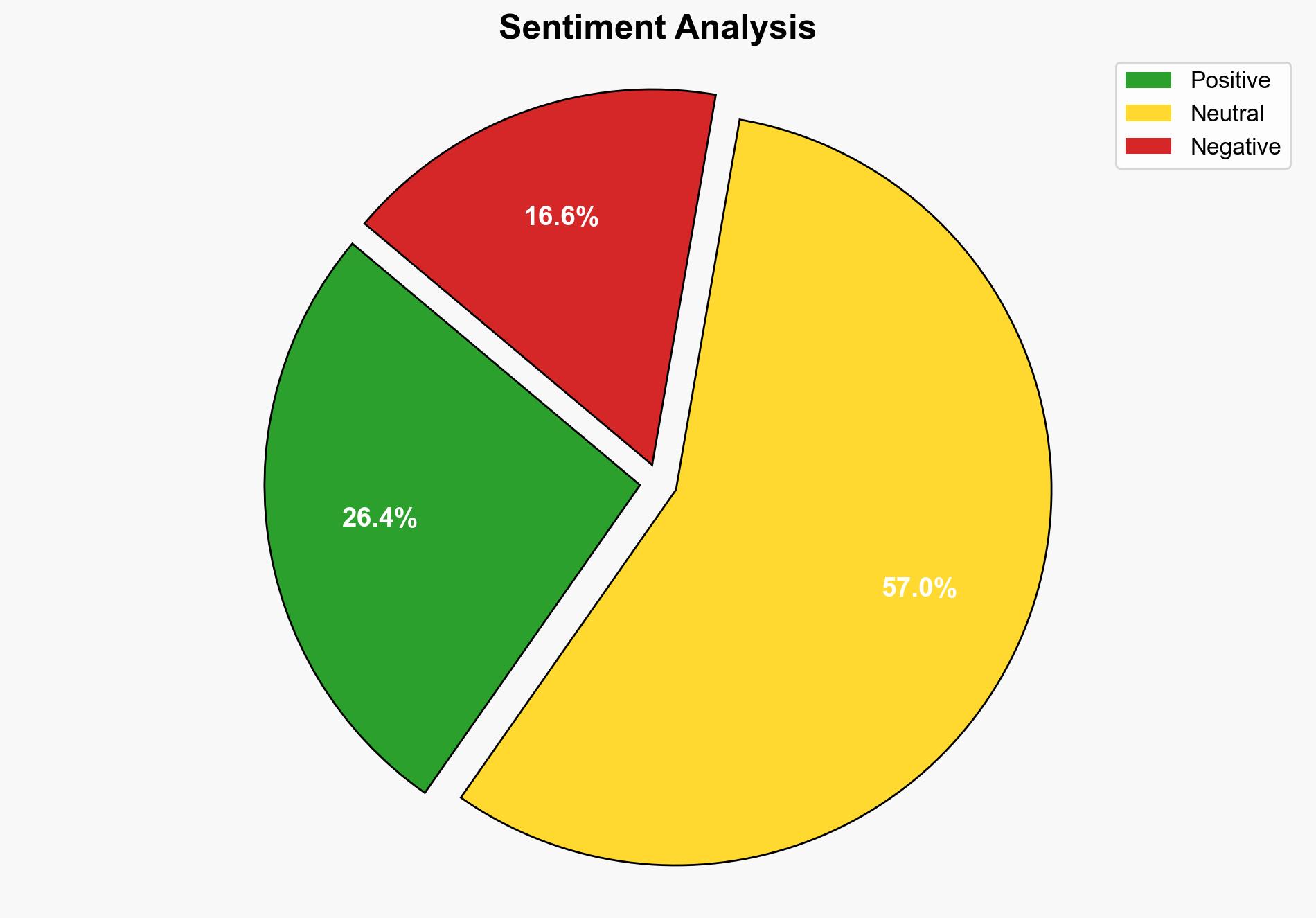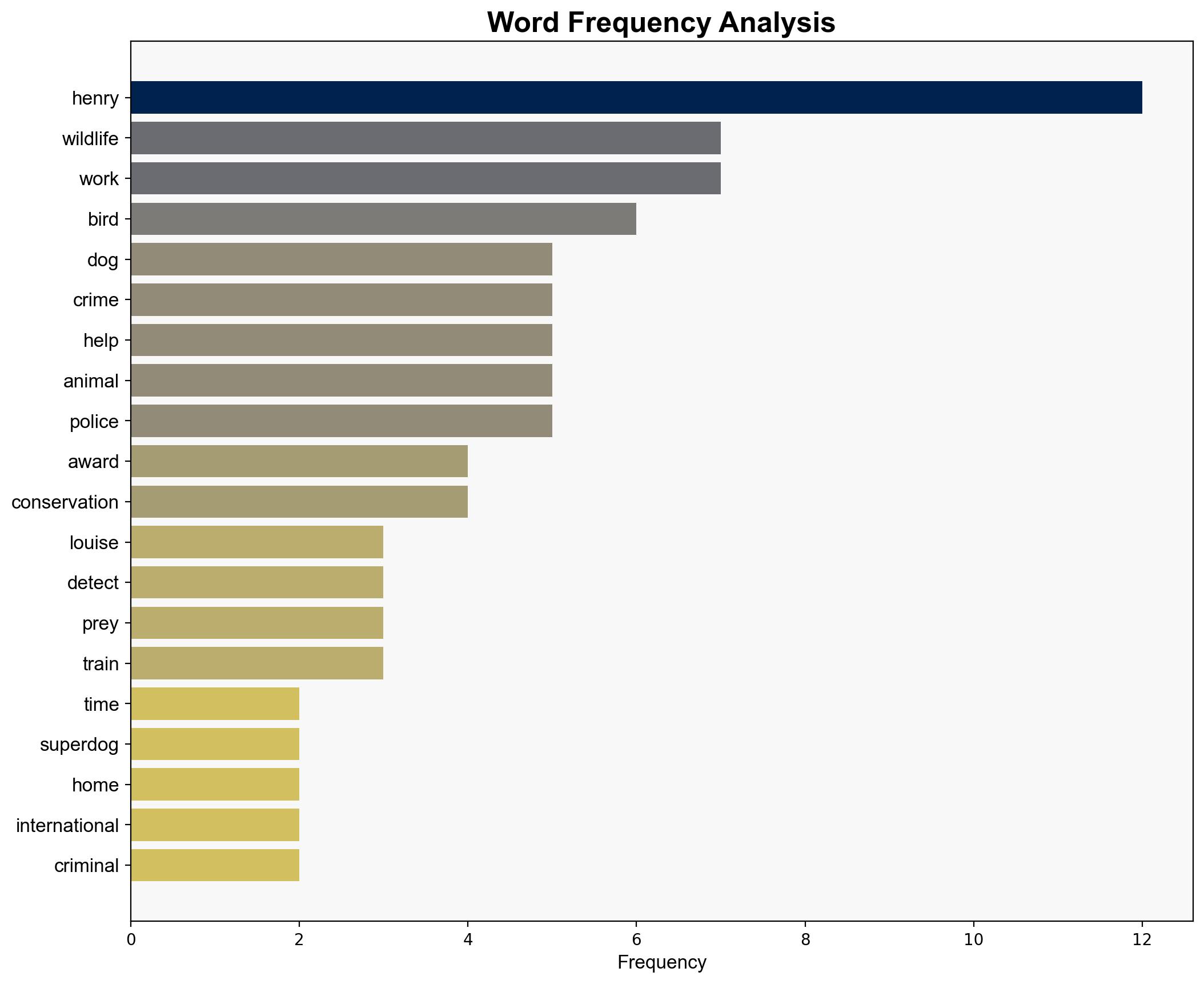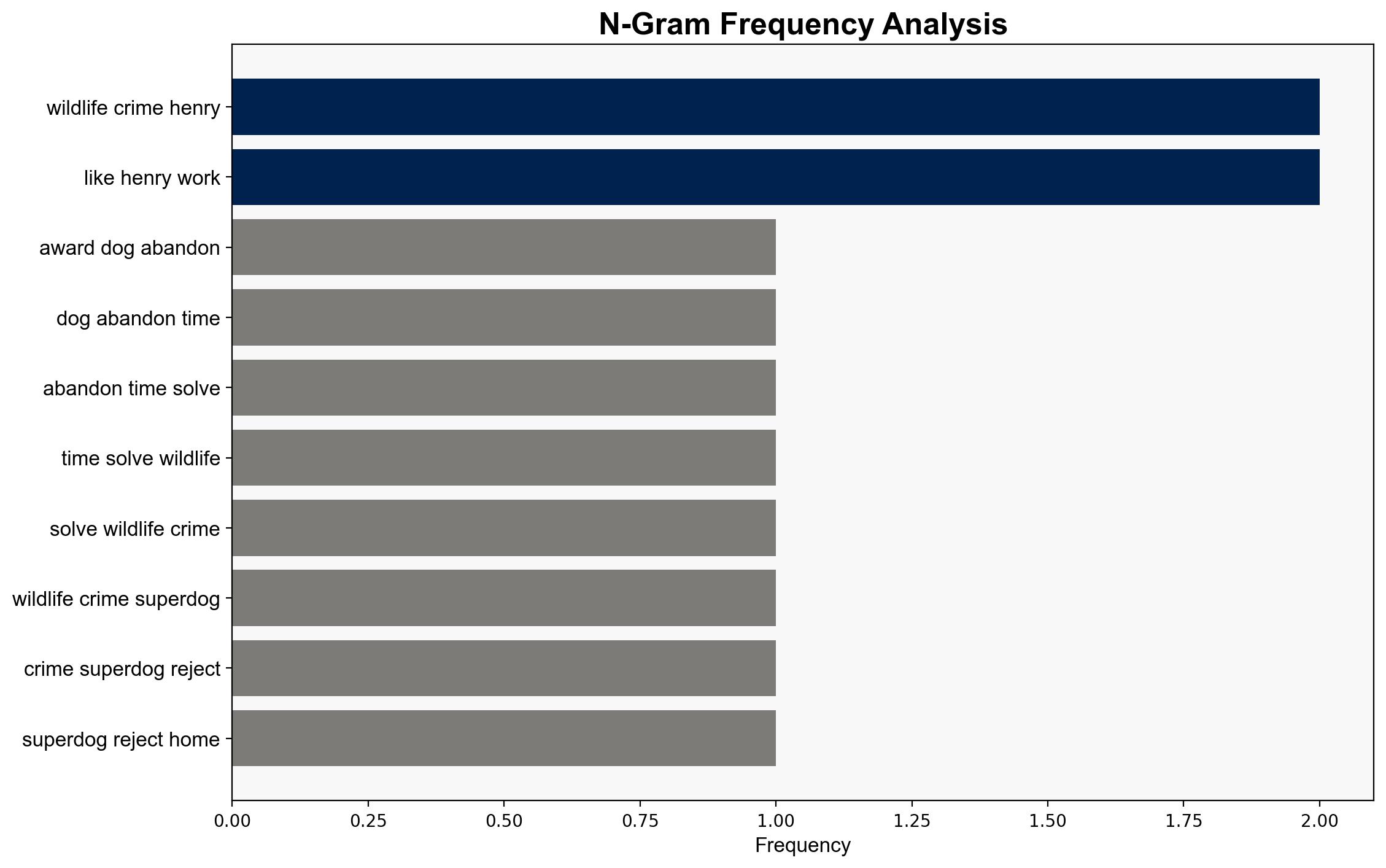Award for dog abandoned five times but now solving wildlife crime – BBC News
Published on: 2025-10-17
Intelligence Report: Award for dog abandoned five times but now solving wildlife crime – BBC News
1. BLUF (Bottom Line Up Front)
The strategic judgment is that the use of trained detection dogs like Henry significantly enhances wildlife crime detection and prevention efforts. The most supported hypothesis is that Henry’s success is primarily due to his specialized training and inherent traits, rather than being an isolated case of a uniquely talented animal. The confidence level in this assessment is high. Recommended action includes expanding the training program for detection dogs to cover broader areas and more species.
2. Competing Hypotheses
1. **Hypothesis A**: Henry’s success in wildlife crime detection is primarily due to his specialized training and inherent traits, making him an exemplary case of how trained dogs can aid in conservation efforts.
2. **Hypothesis B**: Henry’s success is an isolated incident, largely due to his unique personal characteristics, and may not be replicable on a larger scale with other animals.
Using the Analysis of Competing Hypotheses (ACH) 2.0, Hypothesis A is better supported. The structured training and the specific tasks Henry performs align with known capabilities of trained detection dogs, suggesting that similar outcomes could be achieved with other dogs under similar training conditions.
3. Key Assumptions and Red Flags
– **Assumptions**: It is assumed that the training methods used for Henry can be standardized and applied to other dogs. It is also assumed that the demand for wildlife crime detection will remain high.
– **Red Flags**: There is a lack of detailed data on the success rates of other trained dogs in similar roles. The narrative may overemphasize Henry’s uniqueness, potentially skewing perceptions of replicability.
4. Implications and Strategic Risks
The successful use of detection dogs like Henry could lead to increased deterrence of wildlife crimes, potentially reducing illegal activities. However, reliance on animal detection could face challenges such as funding constraints, training resource limitations, and possible adaptation by criminals to counter detection methods. The psychological impact on conservation efforts could be positive, fostering public support and increased funding.
5. Recommendations and Outlook
- Expand the training program for detection dogs to cover more regions and species, ensuring a broader impact on wildlife crime prevention.
- Conduct further studies to identify the key traits and training techniques that contribute to successful detection outcomes.
- Scenario Projections:
- Best: Widespread adoption of detection dogs leads to a significant decrease in wildlife crimes.
- Worst: Criminals adapt to detection methods, reducing the effectiveness of trained dogs.
- Most Likely: Gradual expansion of detection dog programs with moderate success in reducing wildlife crime.
6. Key Individuals and Entities
– Henry, the Springer Spaniel
– Louise Wilson
– Michaela Strachan
– International Fund for Animal Welfare (IFAW)
– National Wildlife Crime Unit (NWCU)
7. Thematic Tags
wildlife conservation, crime prevention, detection dogs, animal welfare, environmental protection





